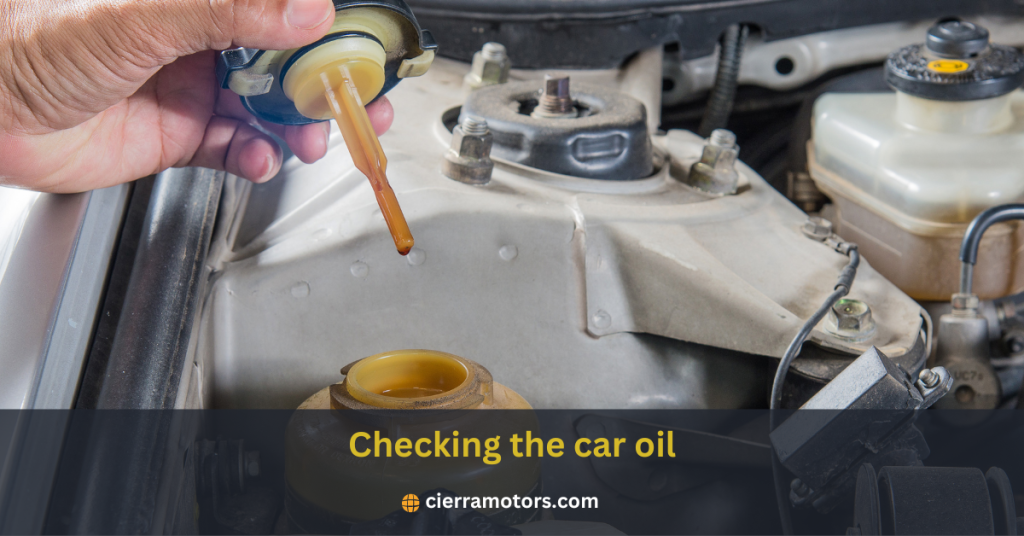Understanding the fluid levels within your car is a critical facet of responsible car ownership. The engine, akin to the heart of a vehicle, depends on a precise balance of oil to function optimally. But how does one discern if there’s too much of a good thing in the underbelly of their vehicle?
The Importance of Proper Oil Levels in Vehicles
The correct volume of oil is integral to an engine’s well-being. It serves multiple functions, from lubrication to temperature regulation and cleaning—a vehicle with too little oil risks metal-on-metal contact, overheating, and performance and safety issues. Conversely, an engine with too much oil can be equally, if not more, damaging. Contaminants disperse less effectively, and high viscosity levels under excess oil strain the engine’s moving parts and seals.
Checking Oil Levels
Understanding your car’s specific oil needs is the first step in the process. Every vehicle requires a particular volume and type of motor oil, and your car’s manual is a trustworthy guide. Checking your oil is relatively simple and should become a regular maintenance routine.
Step-by-Step Guide to Checking Oil Levels
Locating the Dipstick
The dipstick is typically a brightly colored handle or tab within reach under the hood. When withdrawn, it’s linked to the oil tank and gives you a direct line of sight into the oil level.
Wiping and Re-inserting the Dipstick
This ensures an accurate reading. Wipe the dipstick clean, careful not to introduce debris into the oil reservoir, and re-insert it fully. If you’re using a sheet of paper, wait for the oil to spread over it.
Reading the Oil Level
Upon the dipstick’s withdrawal, note the highest and lowest oil marks. The oil should fall within these indicators or at a level comfortable for your vehicle’s specifications. Your car may have less oil if the oil is above the maximum mark.
How to Tell If There Is Too Much Oil in Your Car: Signs of Excess Oil
Carry out your inspections with both engine efficiency and your safety in mind. Here are the signs you’ve been overgenerous with the oil:
Visual Indicators

Checking the car oil
A quick visual check of your oil can sometimes yield results. Too much oil can look cloudy or resemble the texture of a milkshake, which suggests water contamination. Additionally, looking into the reservoir and seeing a level above the ‘Full’ line indicates overfill.
Performance Issues
Watch out for signs like poor fuel economy, sluggish engine performance, or stalling, which could indicate too much oil in the engine. For example, if your car suddenly starts consuming more fuel than usual, it might mean excessive oil-causing issues.
Potential Consequences
Rolling out of the garage with an overfilled engine often leads to the most dreaded of scenarios — white smoke billowing from your exhaust. This is typically a sign that oil is finding its way where it doesn’t belong, such as the combustion chamber, and oil burning can further stress internal components.
Prevention and Remedies
Mitigating the risks of high oil levels involves proactive measures and damage control strategies.
Steps to Rectify Overfilling
If you’ve identified too much oil, immediate action is crucial to prevent damage. Draining the excess oil, usually through the oil drain plug, is a delicate process that should be handled promptly and preferably by a professional.
Maintenance Tips for Optimal Oil Levels
Prevention is better than a cure. When performing an oil change, be precise with the amount you add. It’s easier to top up than drain down.
Common Mistakes to Avoid
Often, errors of judgment, especially for new car owners, can exacerbate oil-related issues.
Errors in Checking Oil Levels
Skipping the step of re-inserting the dipstick fully before checking the oil level can lead to a false reading due to residual oil on the dipstick. In some cases, not cleaning the dipstick between readings can also provide inaccurate results, as old oil remnants could skew the measurement.
Risks of Ignoring Overfilled Oil
Continuously driving with an excessive amount of oil in your engine can result in catastrophic engine failure. This can cause severe damage to critical components such as seals, gaskets, and other vital parts over time. The longer this excess oil is left unaddressed, the higher the probability of encountering issues that could lead to costly repairs or engine replacement. Regular maintenance checks and proper oil levels are crucial to prevent such detrimental consequences.
Conclusion
A dipstick may seem like a mundane piece in the grand mechanical orchestra of a car, but its regular deployment can save you from an overture of damage to your engine. In conclusion, recognizing signs of overfilled oil is more than a mechanical check – it’s an insight into the health of your vehicle.
FAQs
Q. How do you tell how much oil your car needs?
A. Your car’s manual will contain the specific volume and type of motor oil required. Following these guidelines and regularly checking your oil levels is essential to ensure optimal engine performance. So, it’s always recommended to consult the manual whenever in doubt. You can also consult a mechanic or refer to online resources for more information on your car’s specific oil needs.
Q. Why is it essential to check your car’s oil levels regularly?
A. Regularly checking your car’s oil levels helps maintain optimal engine performance and prevents potential damage. It allows you to identify any issues with excess or insufficient oil levels and address them promptly to avoid further damage. Regularly checking and changing your oil also helps prolong the life of your engine, saving you from costly repairs or replacements in the future.
Q. Can I drive my car if there is too much oil in it?
A. It is not recommended to drive your car if there is too much oil in the engine, as it can lead to damage and potential safety hazards. It’s crucial to address any excess oil promptly by draining the excess and maintaining proper levels for optimal vehicle performance. If you need more clarification about the amount of oil in your engine, it’s best to consult a professional mechanic for proper guidance.
Q. How often should I check my car’s oil levels?
A. It is recommended to check your car’s oil levels at least once a month or before any long trips. Keeping track of your vehicle’s oil levels and changing it regularly, per manufacturer guidelines, can help maintain the health of your engine and prevent potential damage. Regular maintenance checks are crucial for your vehicle’s overall well-being and longevity.



Leave a comment